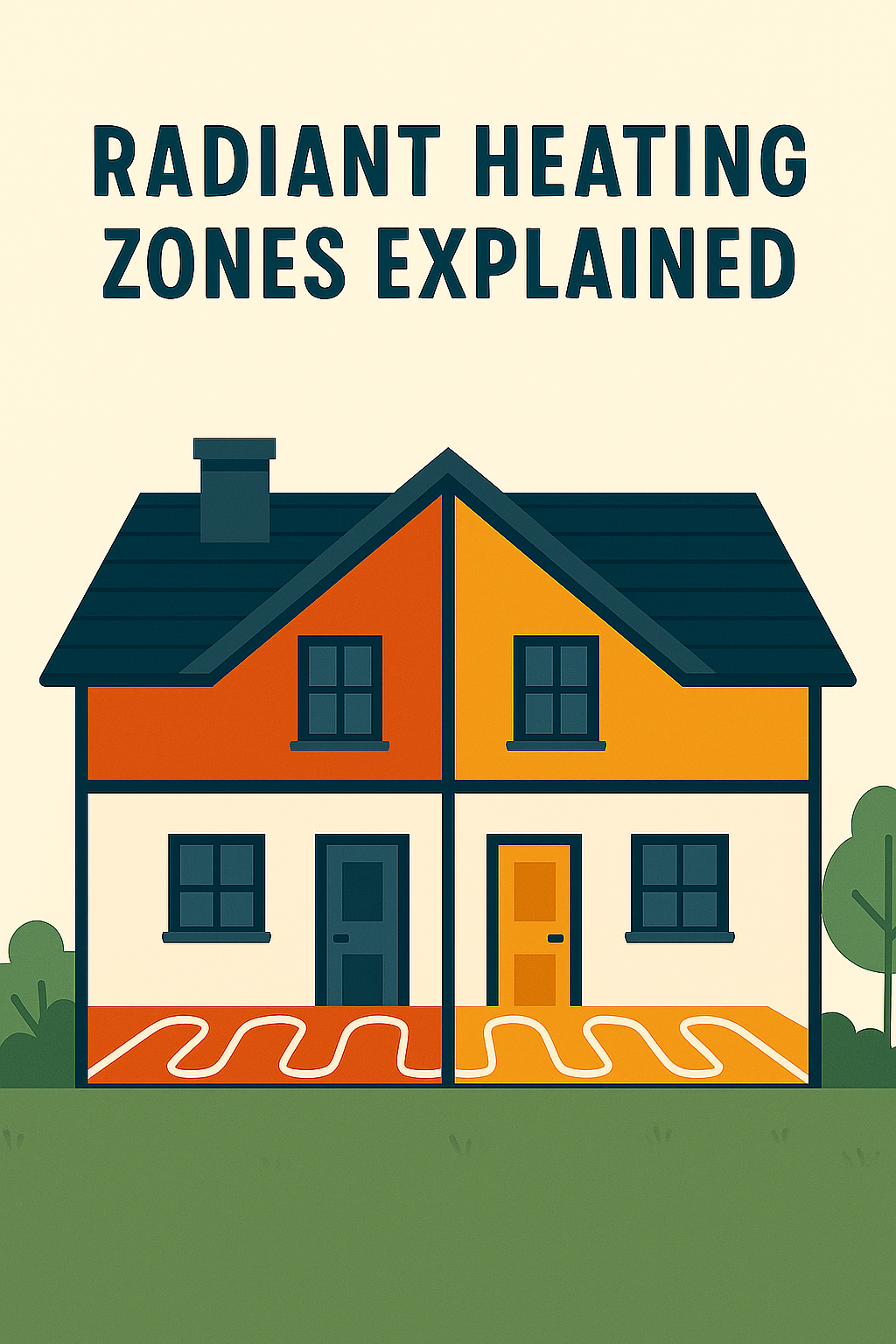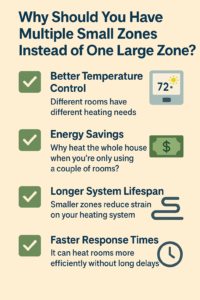Introducing EasyFloor™: The Most Efficient Radiant Heating System for Your Home
Share this story: Facebook X LinkedIn Email Introducing EasyFloor™: The Most Efficient Radiant Heating System for Your Home Are you

What Are Heating Zones?
In radiant heating, a “zone” refers to a separate heating area controlled by its own thermostat. Some homeowners make the mistake of setting up their entire home as one large zone, but in most cases, having multiple smaller zones is the smarter choice.
Why Should You Have Multiple Small Zones Instead of One Large Zone?
Radiant heating works best when different areas of a home can be adjusted independently. Here’s why multiple zones improve efficiency and comfort:
✅ Better Temperature Control – Different rooms have different heating needs. A sunny living room may need less heat than a shaded bedroom. With multiple zones, you can customize temperatures in each area for maximum comfort.
✅ Energy Savings – Why heat the whole house when you’re only using a couple of rooms? Smaller zones allow you to heat only the spaces you need, reducing energy costs.
✅ Longer System Lifespan – A system with one large zone has to work harder to heat the entire area at once. Smaller zones reduce strain on your heating system, leading to less wear and tear over time.
✅ Faster Response Times – When your system is divided into multiple zones, it can heat rooms more efficiently without long delays.

How Many Zones Do You Need?
The number of zones in a radiant heating system depends on your home’s layout, but here are some general recommendations:
Home Area | Recommended Zones |
Living Room & Kitchen | 1 Zone (if open concept), 2 Zones (if separate spaces) |
Bedrooms | 1 Zone per bedroom |
Bathrooms | Separate Zone (to keep them extra warm) |
Basement | Separate Zone (since basements are cooler) |
Example: A 3-bedroom home with a living room, kitchen, two bathrooms, and a basement might have 5 to 6 zones, allowing for better comfort control in each space.
How to Design Your Radiant Heating System for the Best Zone Setup
Final Thoughts: A multi-zone radiant heating system provides superior comfort, energy efficiency, and control compared to a single-zone setup. If you’re planning a radiant heat installation, be sure to design a zoned system that fits your lifestyle and home layout.
Share this story: Facebook X LinkedIn Email Introducing EasyFloor™: The Most Efficient Radiant Heating System for Your Home Are you
Share this story: Facebook X LinkedIn Email Signs Your Radiant Heating System Needs Attention: Troubleshooting Tips and When to Call
Share this story: Facebook X LinkedIn Email Radiant Heating & Sustainability: Why Hydronic Systems Are Eco-Friendly As sustainability and energy
Share this story: Facebook X LinkedIn Email Radiant Heating System Maintenance 101: Keep Your System Running Smoothly A radiant heating
Share this story: Facebook X LinkedIn Email Geothermal Boilers and Radiant Heating – A Perfect Match with FloorHeat EasyFloor
Share this story: Facebook X LinkedIn Email Choosing flooring for your radiant heating system involves balancing aesthetics, performance, and practicality.